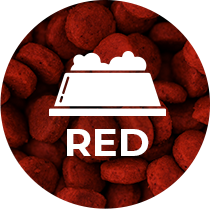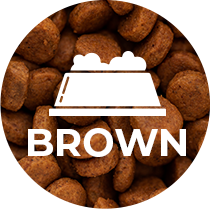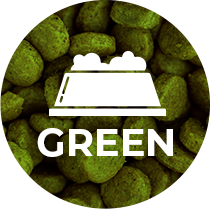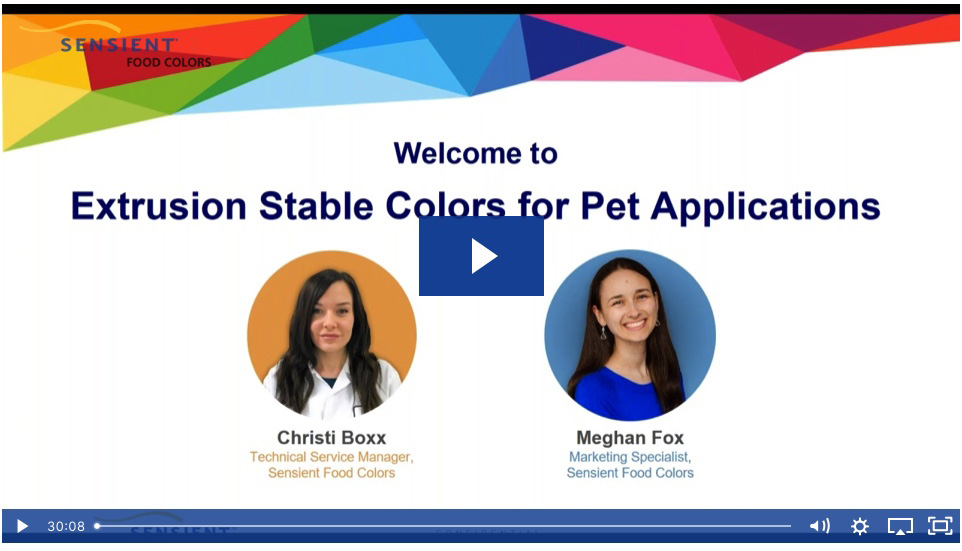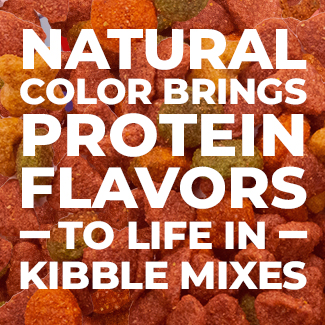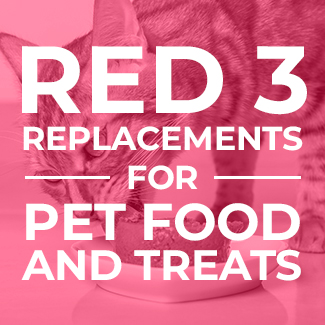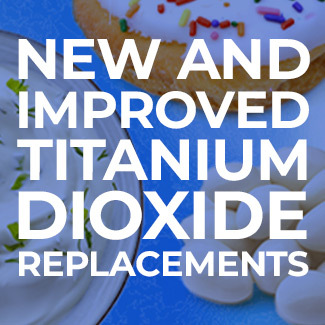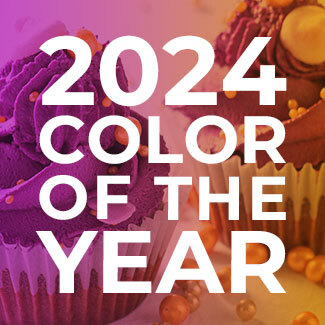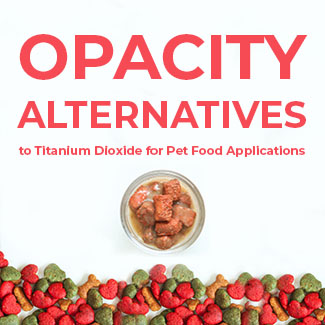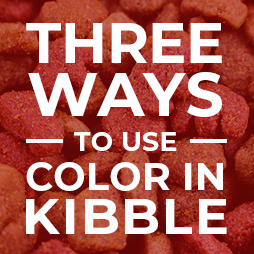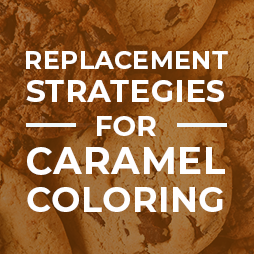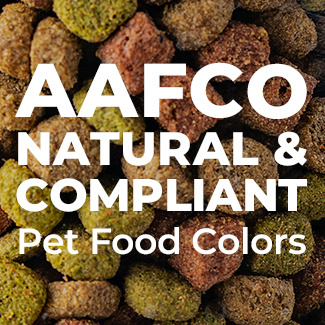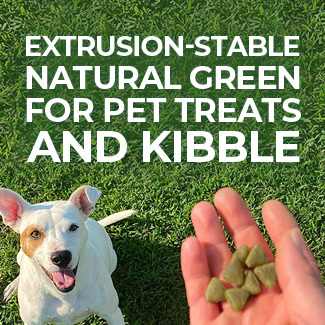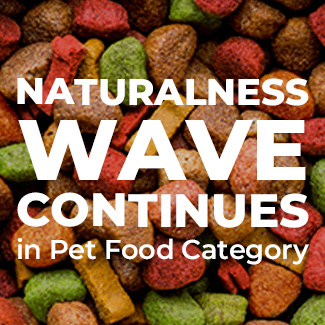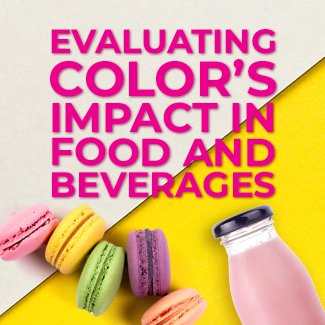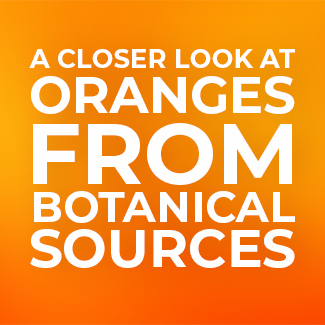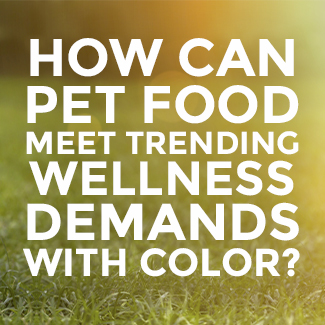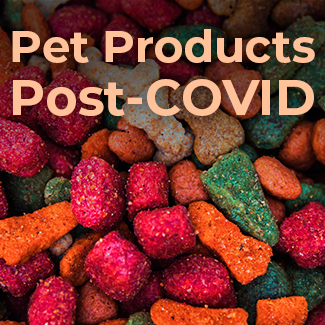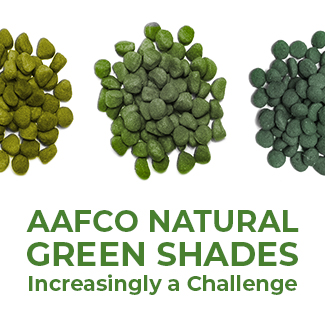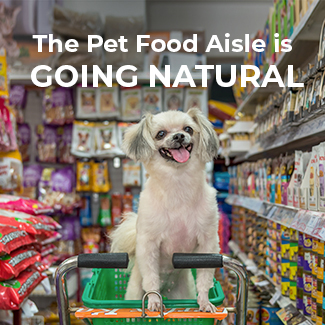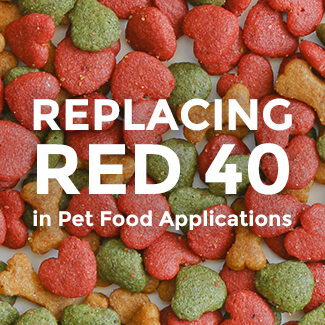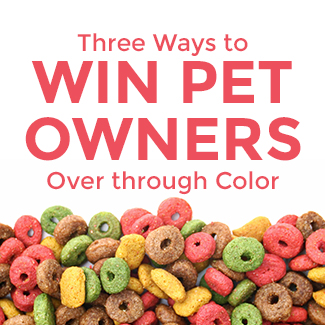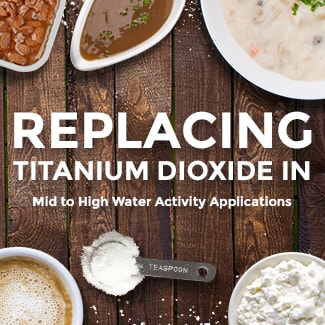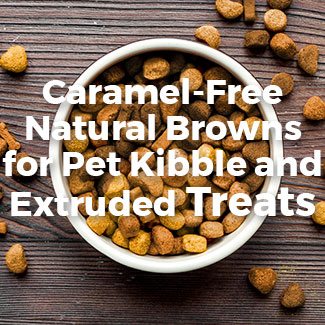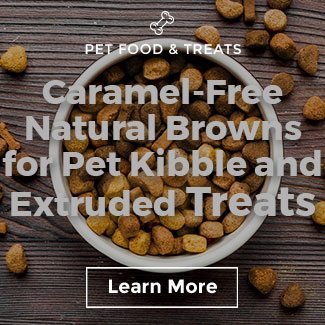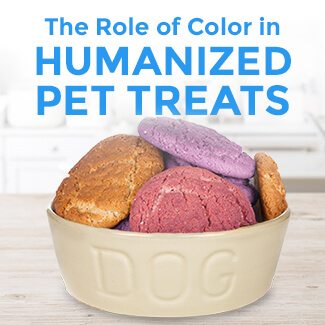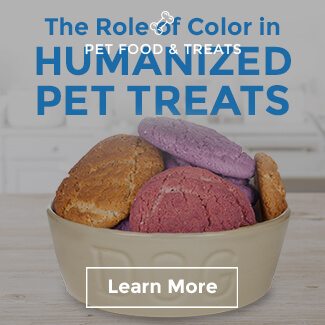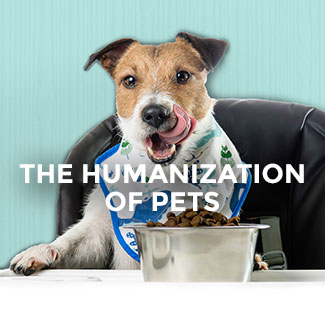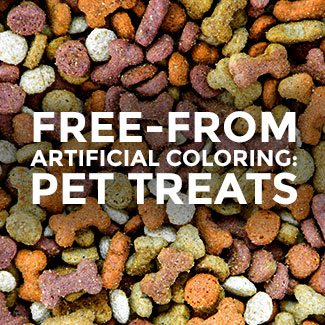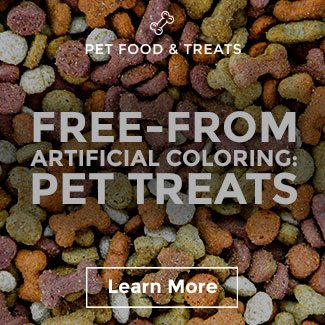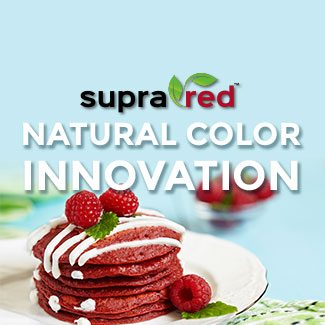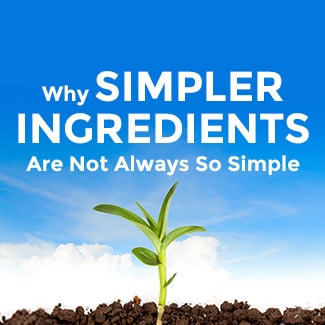Extrusion Stable Colors for Pet Applications
Nature’s Rainbow in Pet Kibble? Naturally!
Brands are increasingly responding to consumer interest in pet food and treats that are naturally formulated and overly sustainable. This is especially timely as “no-no” lists become more and more prevalent in the pet aisle. The trend continues to grow since new pet owners, especially younger ones, treat their pets as full-fledged family members that deserve the same ingredient quality as humans.
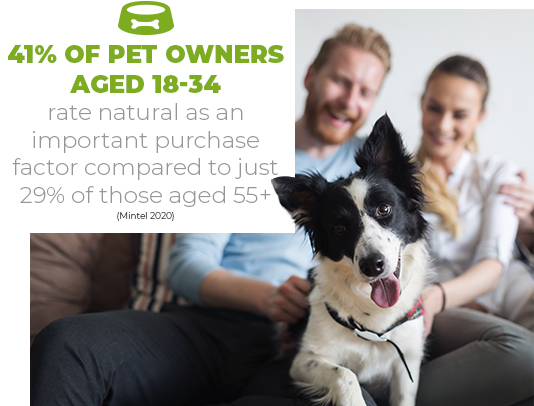
As of 2020, 15% of new pet food products carry an “all-natural” claim, a number that has been steadily rising for the last five ears (Mintel 2020). An even larger percentage make some sort of natural ingredient claim.
While Mother Nature offers a rainbow of pet-friendly botanically sourced colors, many of these color options are not heat-stable, especially under the extreme processing conditions of extrusion. It is important to note that while pets don’t much care about the color, their human parents are greatly influenced by visual vibrancy. In order to create a kibble that delivers on both consumer demand for naturalness as well as the vibrancy pet owners expect, product developers need to find color sources that have good heat stability.
Colors sources such as red beet, for example, are likely to “brown out” instead of maintaining a vibrant red hue when baked or extruded. On the other hand, some colors thrive in high-heat environments. The bright yellow from turmeric (curcumin) is one good example.

Sensient has written about color-specific solutions for the most popular shades for pet applications in the past. Learn more about achieving natural reds, browns, and greens for pet applications here:

Customization is Coming
Color can be used to convey nutritional benefits to pet owners, especially as more consumers are acting more like “pet parents”. In human food, we know that brighter colored food and beverages are generally associated with stronger and better flavor. When it comes to pet food, brighter color also signals better nutrition.
At the beginning of 2020, we predicted a rise in customized pet products. With the world in turmoil as a result of the novel coronavirus, we expect to see this intensify even further. People have bonded deeply with their pets in isolation.
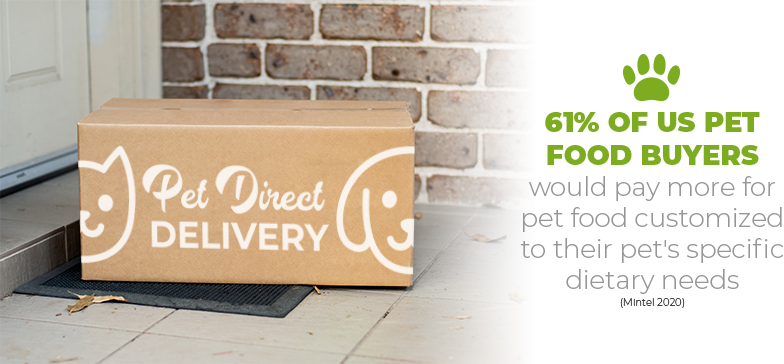
Kibble pieces or treats that are colored differently to show a particular nutritional benefit are a great way to create additional value for consumers. Pet owners are also interested in functional health benefits, but all-natural pet food formulations are the key. Just as with customized products, functional health benefits can be highlighted with a differently colored or shaped piece of kibble or a brightly colored treat.

Watch this on-demand recorded webinar for more advice on how to reach the vibrant shades you want with natural colors that will stand up to the harsh heat of extrusion:
If you’re ready to start formulating your next pet project, request a sample of any of the AAFCO natural colors that I mentioned in the webinar!



